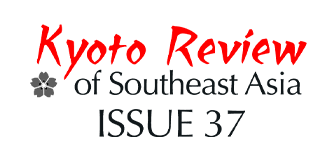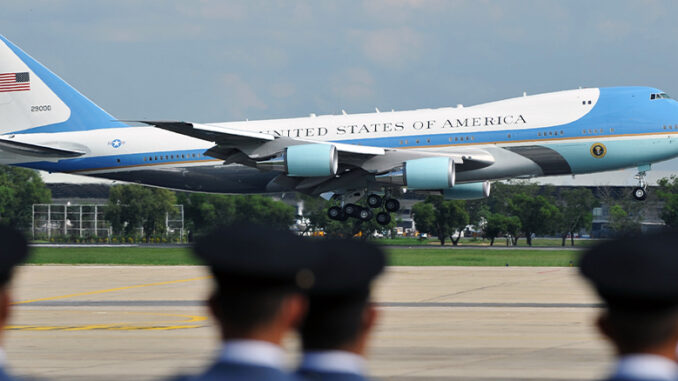
American Military Aid and Praetorian Agency
Strategic considerations motivated US involvement in Cold War Southeast Asia. Containing communism required the construction and maintenance of military bases around rival states. The need for bases resulted in American support for highly authoritarian regimes willing to suppress popular discontent against foreign military forces stationed on sovereign soils. 1 Dynamics between external imposition and internal resistance have dominated most discussions of US-Southeast Asian relations. US allies are frequently portrayed as mercenaries doing America’s bidding in exchange for material rewards. 2 Yet, conservative Southeast Asian elites did not lack agency and often utilized American aid to advance their own interests. This article examines how praetorian 3 militaries in Thailand and the Philippines used their respective linkages with the United States to serve domestic factional concerns. 4 A better understanding of these militaries can be gained by placing them in their respective historical contexts. National praetorian interests evolved over time along distinct trajectories. Thai military elites exercised their power directly and, for a time, completely over politics. In doing so, praetorian institutions unintentionally exposed themselves to capture by a resurgent monarchy. The Philippine military, by contrast, eventually settled on more indirect forms of praetorian influence over elected politicians and consequently sustained firmer control over more limited interests.
The Development of Thai Praetorianism and a Monarchized Military
Remaking Siam’s Military
Premodern Siamese militaries consisted of armed formations mobilized to wage wars for the greater glory of all-conquering Buddhist monarchs. A king’s armies mainly consisted of temporary levies assembled in royal capitals and tributary states. Armies increased royal glory by capturing people, holy relics, and sacred sites. Acquisition of labor and material objects, rather than incorporating adjoining territories, motivated most wars. Military forces were commanded by kings, princes, and vassals acting on behalf of a royal household. As such, militaries lacked an autonomous corporate identity. Royal armies across the Eurasian landmass functioned in similar ways, albeit on varying scales. Siam’s situation most closely resembled that found in neighboring Burma. Sociopolitical similarities between these two polities bred aggressive competition and spurred fiscal-military innovations geared toward fighting protracted wars. Struggles for mastery over eastern Lao principalities and a weakened Cambodia bred further conflicts with Vietnam in the nineteenth century. 5 Siam’s first three Chakri kings tapped into oceanic trade networks to gather the monetary resources required to expand their spheres of influence and deepen administrative controls over provincial vassals. 6
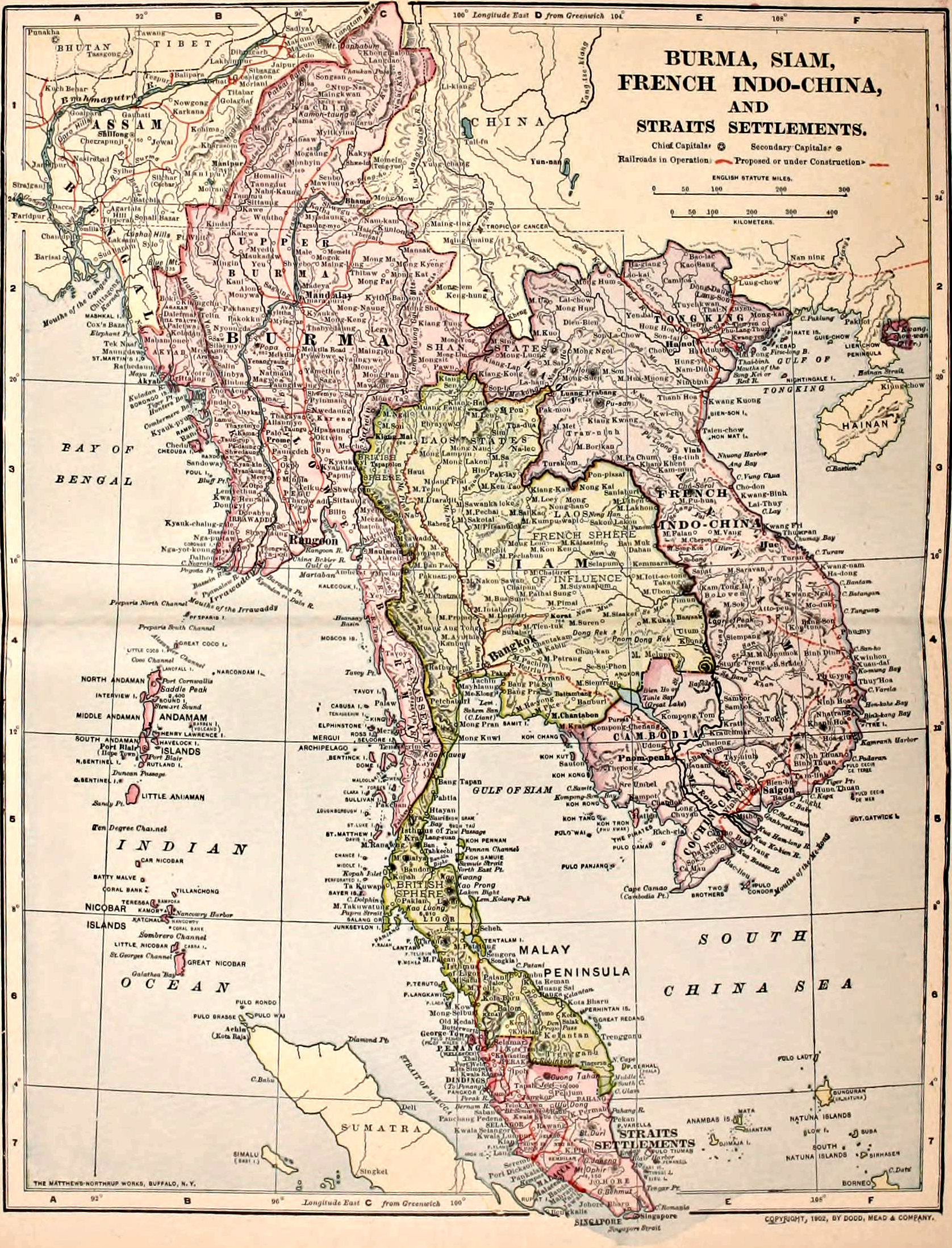
Such precocious state-building did not however succeed in toppling Siam’s Burmese and Vietnamese rivals. Complete subordination of these polities only came at the hands of European imperial powers in the nineteenth century. European colonial expansion across mainland Southeast Asia presented dangers and opportunities that had profound effects on Siam’s military. Britain’s wars of conquest in Burma and France’s gradual incorporation of Indochina removed traditional rivals only to replace them with greater military threats. Siamese elites accepted early on that they could not face down western power through armed conflict. The 1855 Bowring Treaty opened the realm to British commerce by abolishing or fixing various duties, granting British subjects extraterritorial rights, and permission to trade freely with their Siamese counterparts. Tensions with France over territorial jurisdiction across the Mekong delta almost triggered war during 1893’s Paknam incident. With Bangkok under naval blockade, king Chulalongkorn (r. 1868-1910) capitulated to French demands and surrendered extensive territories along Siam’s eastern borderlands. Further territorial concessions to Britain in the Malay south also obviated causes for armed conflict.
After the mid-nineteenth century, Siam’s military effectively ceased waging protracted external wars. Henceforth, Siam accommodated, rather than confronted, superior military powers. Bangkok’s willingness to bend with prevailing geopolitical winds allowed for far greater elite continuity than seen elsewhere in Southeast Asia. By contrast, Burma’s confrontational approach to British imperial challenges precipitated a wholesale liquidation of the royal order in the 1880s. With no external enemies to fight, Siam’s military took on a new raison d’être by the 1890s. As Siam lost extensive territories to western imperial powers, Chulalongkorn was determined to deepen royal control over his remaining domains. The army was consequently modernized and repurposed to serve new monarchic, as opposed to national, interests. 7 Soldiers became royal enforcers, leading agents in perpetuating royal absolutism and ensuring Chakri supremacy over recalcitrant subjects. Greater coercive capacities allowed government officials to rollback provincial privileges and extract greater resources from society. Tightening royal control generated intense resentment, particularly in the north and northeastern provinces. Simmering discontent erupted into armed rebellions in 1902 that were violently crushed by royal troops. Yet, provincial alienation did not generate sufficient mass opposition to threaten royalist modernization.
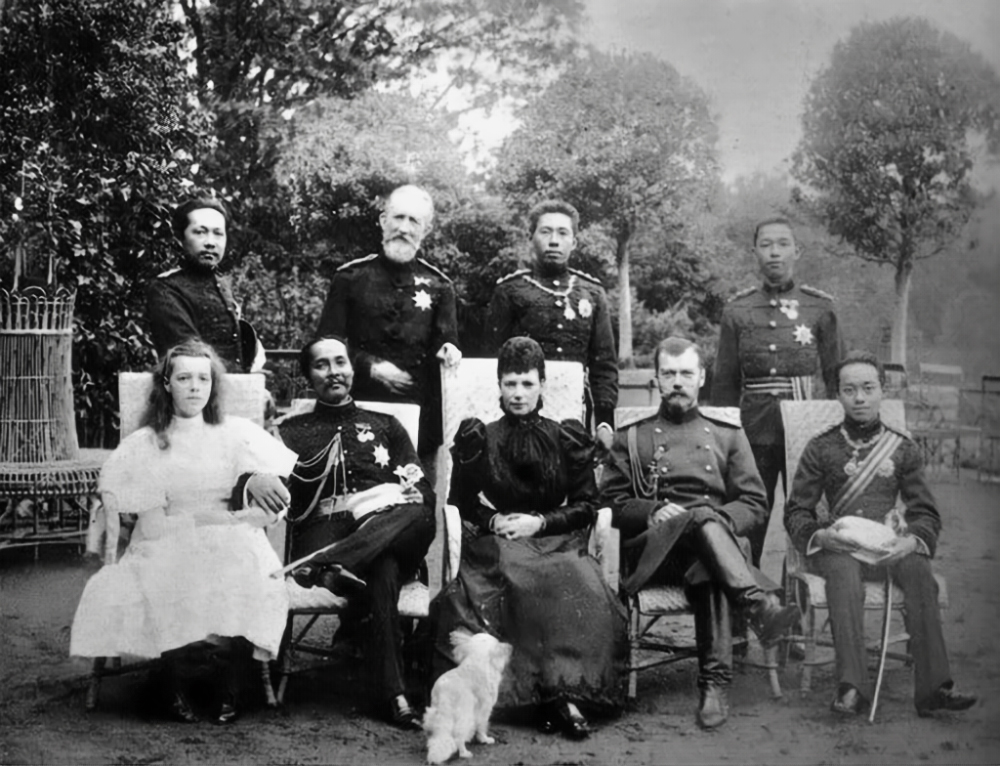
Direct Praetorianism and Declining Monarchic Power
Royal absolutism was ultimately undermined by its own enforcers. Chulalongkorn was succeeded by his two sons, Vajiravudh (r. 1910-1925) and Prajadhipok (r. 1925-1935). 8 Both lacked their father’s charismatic authority and alienated bureaucratic elites chaffing under overbearing royal control. As essential agents in the state’s coercive machinery, army officers had accrued extensive powers and privileges. Royalist modernization efforts resulted in commanders being sent abroad to receive western military training. Consequently, these officers had been exposed to societies with circumscribed executive authorities. Army commanders soon gained a sense of their own importance, feeling entitled to have a greater say in the running of state affairs because of their administrative expertise. Civilian bureaucrats driven by similar dynamics came to ally with army men and form the People’s Party in 1927. Revolutionary rhetoric aside, the People’s Party was an elitist group with little interest in inclusive democracy. Its main concern was to topple royalist absolutism and capture the state. 9 This it did in a 1932 military coup. The monarchy immediately attempted to reassert its authority. Ultra-royalists attempting a countercoup were bloodily defeated in 1933. Unwilling to accept his degraded status, Prajadhipok abdicated in 1935 and was succeeded by the boy king Mahidol (r. 1935-1946). The palace was effectively subordinated to senior bureaucratic officials.

Fissures within the new ruling group generated further political instability. At base, People’s Party supremacy was based on military power. The military carried out and defended the coup and thus felt it deserved to dominate the government. Plaek Phibunsongkhram, commonly known as Phibun, commanded the forces that crushed royalist reaction in 1933. He then consolidated his position as army leader and became prime minister in December 1938. Upon changing the country’s name to Thailand in 1939, he pursued a policy of ethnic nationalism and territorial irridentism, while accommodation Japanese expansionism. 10 Phibun allowed Japanese troops to occupy Thailand and use it as a steppingstone for further conquests in Malaya and Burma. Such diplomatic maneuverings brought temporary territorial gains but alienated the allied powers. As Japan faced defeat in the summer of 1944, Phibun resigned and Pridi Banomyong, leader of the People’s Party civilian wing, became prime minister in 1946. Facing punitive reparations from an aggrieved Britain, Thai elites shifted their allegiance to the United States. American protection lessened the burdens usually imposed on countries allied to the wrong side in multinational wars. Yet, Washington’s turn to Cold War confrontation with the Soviet Union resulted in a preference for conservative regimes hostile to radical change. Thus, the Thai military returned to power in 1947 and Phibun managed to reclaim nominal supremacy over the military and state in 1948. After some hesitation, Bangkok sided wholehearted with western strategic interests by supporting wars against communist expansion in Korea and Indochina. Washington rewarded Thai loyalty with massive increases in military and economic aid. 11
American aid flows initially aggravated Thailand’s political instability. Phibun’s pretensions of strongman rule failed to contain his overmighty subordinates. Before long, he lost control of his own security forces. Army chief Sarit Thanarat and police director Phao Siyanon turned their respective organizations into private armies committed to advancing their personal ambitions. 12 Sarit and Phao cooperated in eliminating residual civilian influence in Thai politics when they suppressed an attempted coup led by Pridi in 1949. Pridi had acted with naval support and this led to further tensions which culminated in a violent clash between the navy and an army-police-air force coalition in 1951. By this point, Phibun’s influence was in sharp decline. His role as a major conduit for obtaining American aid gave him some credibility among praetorian interests but Sarit and Phao eventually constructed autonomous relationships with American security agencies that circumvented Phibun’s gatekeeping. Sarit obtained material assistance from the Department of Defense and American military advisors while Phao received weapons and money from the CIA. The US national security bureaucracy was hardly monolithic and different sectors pursued different interests. Defense and intelligence interests did not mind the praetorian feuding that typified Thailand in the 1950s as the country did not face leftist insurgencies of great intensity. Compared to events in neighboring Indochina, Thailand was indeed a bastion of stability.
Nevertheless, divergent US security interests divided political power in Thailand between two rival warlords. CIA weapons transfers and training programs effectively made the Thai police into a second army. American intelligence officials strengthened Thai police units to contain internal communist dissent and conduct clandestine operations abroad. Phao packaged his activities as measures necessary to combat communism, but he primarily utilized American aid to defend and advance his private interests. As chief of police, he was ideally placed to regulate, direct, and profit from the opium trade. US-supplied military weaponry also enabled him to combat and face down rival praetorian players. Sarit’s fortunes rose as French Indochina fell. Vietnam’s partition at the 17th parallel into a communist north and anti-communist south in 1954 increased American commitments to reactionary Southeast Asian armies. In addition, the Eisenhower administration’s New Look policy reduced expenditures associated with maintaining a large conventional military by building up the armies of anticommunist allies. Foreign soldiers could contain communism at a fraction of the cost. Sarit distributed American military patronage to key associates and soldiers to consolidate and sustain their loyalty. In 1957, he launched coup which toppled Phibun and sent Phao into exile.
Praetorian Royalism and the American Alliance
Sarit rapidly asserted army control over Phao’s police and other branches of the Thai military. 13 Washington acknowledged Sarit was the only game in town and channeled aid directly to his ruling faction. All security force branches relied on Sarit for access to American patronage. Control of exogenous military aid confirmed the subordination of internal praetorian groupings, making Sarit Thailand’s supreme warlord. He dismantled Phao’s opium networks and replaced them with his own heroin trading syndicate, accruing huge wealth in the process. Dissidents and undesirables faced summary trials and public executions. Stern measures were not entirely unpopular with a Thai public eager for order after a decade of intra-elite warfare. US funding for infrastructural investments, meant to consolidate Bangkok’s control over peripheral areas, widened Sarit’s cult of personality as he portrayed himself as a figure delivering modernity in the form of roads, communications, and services to the provincial masses. Infrastructural development made the Thai military into a truly national institution. Before the late 1950s, military elites had devoted their energies to capturing state power in Bangkok. Under Sarit, the military went among the people, guiding them towards ethnic unity and anti-communist vigilance. Diplomatically, Sarit strengthened military ties with the United States. Thailand had signed on as a charter member of the multilateral Southeast Asian Treaty Organization in 1954, but 1962’s Rusk-Thanat communiqué clinched a de facto mutual defense treaty between the two countries.
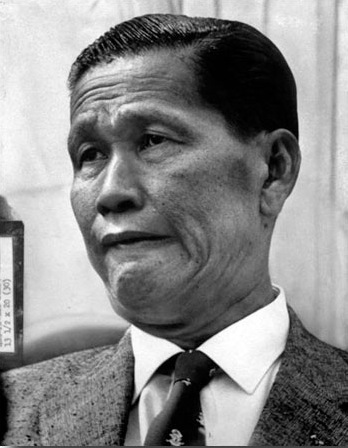
However, Sarit lacked the polish and personal legitimacy associated with statesmanship. His heavy drinking and crass womanizing did not endear him to a broad public. Thus, he chose to bolster his political position by allowing the monarchy back into politics. If Sarit was seen as a loyal servant of a semi-divine king, his power would only increase. Hence, the military began to sacralize the monarchy in new ways. King Bhumibol Adulyadej (r. 1946-2016) could no longer be a remote figure cloistered in temples and performing esoteric Hindu-Buddhist rituals. 14 The king had to be seen, worshipped, adulated, and adored. Sarit could then bask in, and absorb, royal charismatic authority, further tightening his grip on power. In effect, the monarchy and military formed an interdependent relationship. Yet, the monarchy was treated by the military as a junior partner. Sarit’s praetorian royalism dovetailed with palace interests and served American counterinsurgency concerns. As US involvement in Vietnam grew in the early 1960s, there was a need for secure base areas from which to organize and conduct military operations. Thailand’s location made it an essential geostrategic asset for Washington’s defense planners. The country became an unsinkable aircraft carrier for US warplanes and continued to fulfill that function into the 1970s. As Thai authorities opened their territory to US air force operations, the masses needed to mobilize around a popular, semi-sacred, figure committed to the regional anti-communist campaign. King Bhumibol became a symbol of a unified, conservative, and traditional Thai nation deeply hostile to alien ideologies. Bhumibol’s deification through American sponsored royal tours and public works programs was an act of psychological warfare. US policymakers reinforced Sarit’s recentering of the Thai monarchy to direct popular attention away from communism and toward reactionary nationalism.
Sarit placed Thailand on a path of active involvement in the second Indochina war. His death in 1963 only escalated that involvement as his key associates and successors, Thanom Kittikachorn and Praphas Charusathien, continued Sarit’s strategic alliance with the United States. Tens of thousands of US airmen flooded into Thailand, essentially occupying the country until 1973. Much of America’s air war over North Vietnam was conducted from Thai airbases. In 1967, the US began launching B-52 strikes from Thailand, an overt projection of military power impossible to conduct without a compliant host government. 1967 also saw the deployment of Thai combat troops to South Vietnam. These units were further reinforced in 1968 and engaged in search and destroy operations against enemy formations. 15 1968’s deployments came at a particularly sensitive time as Park Chung Hee refused to send further South Korea troops to South Vietnam after North Korea’s Blue House raid. Thai troops helped make up for some of the shortfall and Bangkok was amply rewarded. Combat tactics developed in Vietnam blew back on Thailand as military units became more aggressive in their hunt for domestic insurgents. Ariel bombardments and massive sweeps by ground forces proved counterproductive. The state’s overmilitarized response to dissident bands alienated Thai villagers and upland communities. Aggrieved rural inhabitants often joined the insurgents and inflicted heavy casualties on the security forces. More subtle methods of population control developed parallel to efforts at direct counterinsurgency. Agrarian-based militias and guard units incorporated wide swathes of the general populace into the state’s security machinery. These paramilitary organizations conducted intense indoctrination programs premised on anti-communism and arch-royalism. Such activities proved far more effective at containing popular support for insurgent bands than blundering military repression.
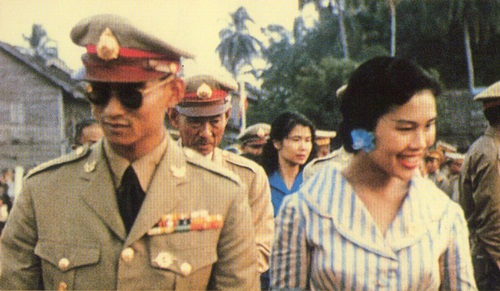
Royalist Capture of Praetorian Power
Subtle domestic political changes took place as Thailand fought communism at home and abroad. Problems were soon evident in high politics. Thanom and Praphas lacked Sarit’s authority among praetorian elites. More importantly, their crude insistence on military supremacy eventually alienated the monarchy. Palace officials effectively indigenized exogenous American psychological warfare operations to serve royal interests. Bhumipol went among his people to inaugurate rural development and health programs, gradually superseding his generals as the center of popular adulation. The period 1963-1973 saw an equalization of military and monarchic power. Washington’s drawdown from Vietnam after 1968 curtailed aid allocations to Bangkok and resulted in economic problems that made a highly corrupt government increasingly unpopular. 1973’s Paris Peace Accords and a Congressional cutoff of bombing operations over Cambodia ended direct US military involvement in Indochina. American support for the Thai military waned and royalist elites refused to be dragged down with a decaying praetorian regime. When the military responded to mass protests for democratization in October 1973 with lethal force, the palace detached itself from the army and sided with the people. Withdrawal of royal legitimation contributed to the collapse of the Thanom-Praphas clique. Royalist actions were not however motivated by a genuine concern for people power. Their primary concern was preserving and expanding the monarchy’s recently accrued powers. These powers came from Thai generals and American national security officials, enabling, perhaps unintentionally, a return to royalist rule.
After 1973, the United States played a relatively marginal role in mainland Southeast Asian affairs. Indochina fell to communism in 1975 and residual US military forces left Thailand in 1976. Washington confirmed its commitment to defend Thailand in the event of external attack after Vietnam’s occupation of Cambodia in 1979 and US-Thai military exercises, known as Cobra Gold, commenced in 1982. Washington remained a source of weaponry and training and contacts were tightened during America’s war on radical Islam, but relations never reverted to the high levels seen during the second Indochina War. Nevertheless, the American era (1950-1973) continues to have a profound impact on contemporary Thai politics. US policymakers endowed the military and monarchy with resources and tactics that both institutions continued to deploy for their benefit. For much of the 1970s, the monarchy and military were at odds. Initially, the palace allied with the police against the army, using the former to organize right-wing royalist militias to smother leftist movements. 1975’s Indochina revolution, which saw South Vietnam, Cambodia, and Laos fall to communism, generated fears that the Thai monarchy might also collapse. This prompted palace support for a royalist military coup in October 1976 and the brutal massacre of protesting students at Thammasat University by paramilitary police and right-wing militias. 16 Such overreaction again proved counterproductive as enraged students fled to the jungles and bolstered insurgent ranks.
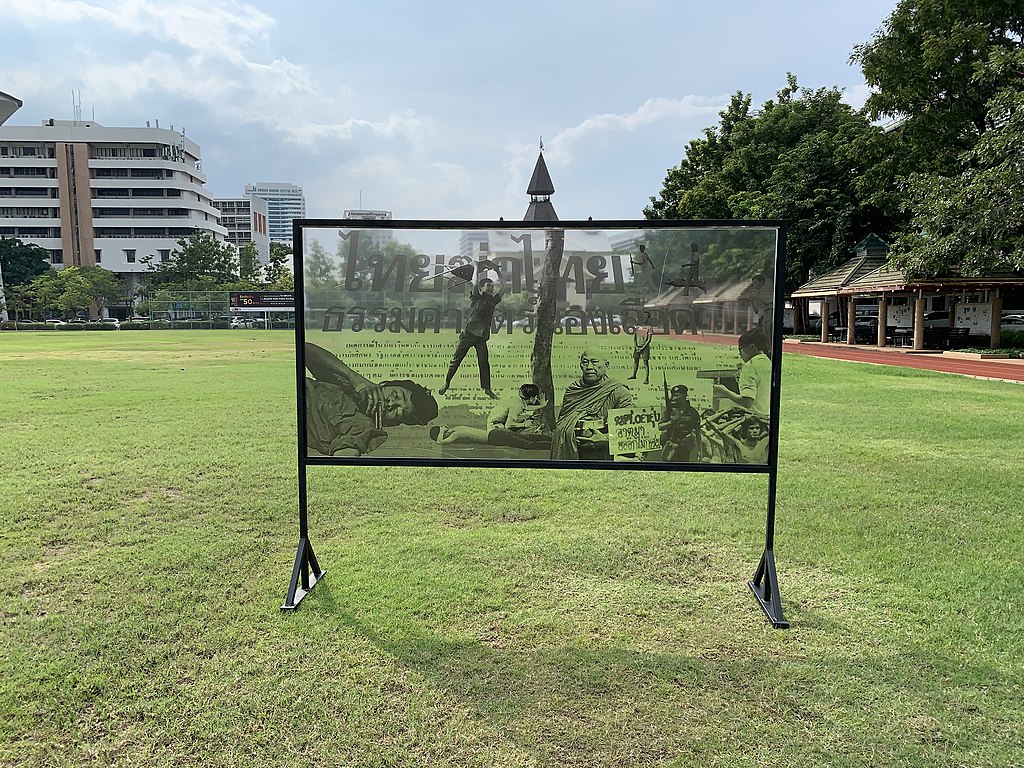
As government coercion became more subtle, the monarchy began to quietly penetrate the military. This was done by recruiting army insiders to the royalist cause. General Prem Tinsulanonda became a key figure in monarchizing the military. 17 Prem had received American army training at Fort Leavenworth. After a distinguished military career, he went into politics. He became army chief in 1978, minister of defense in 1979, and went on to hold the premiership, with royal sanction, from 1980 to 1988. Prem remained army chief until 1982 and retained the defense portfolio until 1986. As such, he played a central role in adjusting military tactics against communist guerillas and helped stave off a grave threat to the monarchy’s security. In addition, Prem pushed a monarchist agenda within praetorian ranks, protecting and promoting royalist officers. Officers averse to monarchic supremacy remained, but they were clearly on the defensive. Suchinda Kraprayoon’s military (1991-1992) was a final attempt to assert praetorian autonomy from the palace, but it ended in failure when the army opened fire on anti-junta demonstrators in 1992. The king once again intervened on the side of democracy and the military retreated to their barracks. Henceforth, troops would only involve themselves in Thai politics on royalist command. They had become the monarchy’s soldiers.
The monarchy managed to capture the military, but it could not control Thai society. American military and economic aid from 1950-1973 unintentionally triggered the development of extra-bureaucratic economic elites and political actors. Counterinsurgent infrastructure in the form of roads, harbors, railways, and airfields encouraged a burgeoning service sector. Heretofore neglected provinces witnessed unprecedented economic development.

This was followed by the rise of modern communication and information technologies in the 1980s and 90s. Ambitious businessmen cashing in on these newfound opportunities did not confine their concerns to the boardroom. Many sought public office to protect and expand their business ventures. Thaksin Shinawatra was the most successful of these politicized tycoons. He made his fortune in telecommunications and went on to win high office through electoral means. Upon assuming the premiership in 2001, Thaksin accelerated the redirection of state resources away from Bangkok-based bureaucrats and middling sectors toward agrarian and urbanizing communities located across Thailand’s peripheries. To be sure, there was nothing remotely altruistic about this patronage shift. Thaksin constructed and consolidated a political base largely composed of traditionally excluded segments to seize and retain high office. Atop his perch at the commanding heights of the Thai state, he rewarded kin, cronies, and business associates with profitable ventures insulated from undue competition. Accumulation without accountability remained a central aspect of politics.
Thaksin’s populism also coupled bread with bullets as a securitized drug war in 2003, mainly targeting social marginals, left some 2,500 people dead after several months. As is often the case, a social cleansing campaign launched to divert public attention away from high corruption did little to curb hard drug use. Furthermore, his populism did not extend to the Malay Muslim south. Policies aimed at dismantling royalist patronage networks beyond the prime minister’s control aggravated latent ethno-sectarian tensions in a partially integrated borderland, leading to widespread violence by 2004. Thaksin responded with brute force, signaling he had no intention of loosening Thailand’s unitary state. These failings, along with expanding graft and nepotism, led to a royalist military coup that toppled the Thaksin government in 2006.
Although Thaksin’s corruption and manipulative demagogy are beyond dispute, traditional elites deployed military force to reconfigure Thai politics for their own, not the people’s, benefit. Five years of populist democracy laid into, and began to unravel, monarchist power networks and Bangkok-Thonburi-centric investment priorities. When Thaksin’s younger sister Yingluck formed a government in 2011 and continued her brother’s policies another coup followed in 2014. Such extraconstitutional interventions were tolerated by many middle-class Thais due to the material benefits accrued under monarchist governments and what Thongchai Winichakul has called a pervasive culture of hyper-royalism. 18
Hyper-royalism constructed a sacral cult of personality around Thailand’s long-reigning King Bhumibol. This massive public relations effort was geared toward saturating sociocultural space with pro-monarchic sentiments. Bhumibol’s role in promoting democracy via his pro-people power interventions in 1973 and 1992 became the stuff of establishment legend. The fact that he did not intervene to halt state violence at Thammasat University in 1976 or during the 2010 Bangkok riots was quietly forgotten. Monarchist Thais could accept such gaps in logic due to the profound charisma of the late king. His successor, king Vajiralongkorn, lacks such qualities and has chosen instead to rely on his control of arch-monarchist elements in the armed forces to construct a neo-absolutist regime that has no interest in populism or network linkages to wider societal forces. Provincial civil society groups remain a force to be reckoned with, however, and middle class Bangkokians appear to have little regard for a jet-setting playboy king compulsively pursuing his own pleasures.
Thaksin’s ability to play the periphery off against the center posed a profound challenge to established interests. This threat was removed via military force. Thaksin’s political network has also proved far more opportunistic than originally thought, but egalitarian populism is now embedded in Thailand’s long-deprived north and northeast. While opposition oligarchs can be coopted into the monarchist fold, it is unlikely the state will be able to decisively dismantle popular forces calling for change.
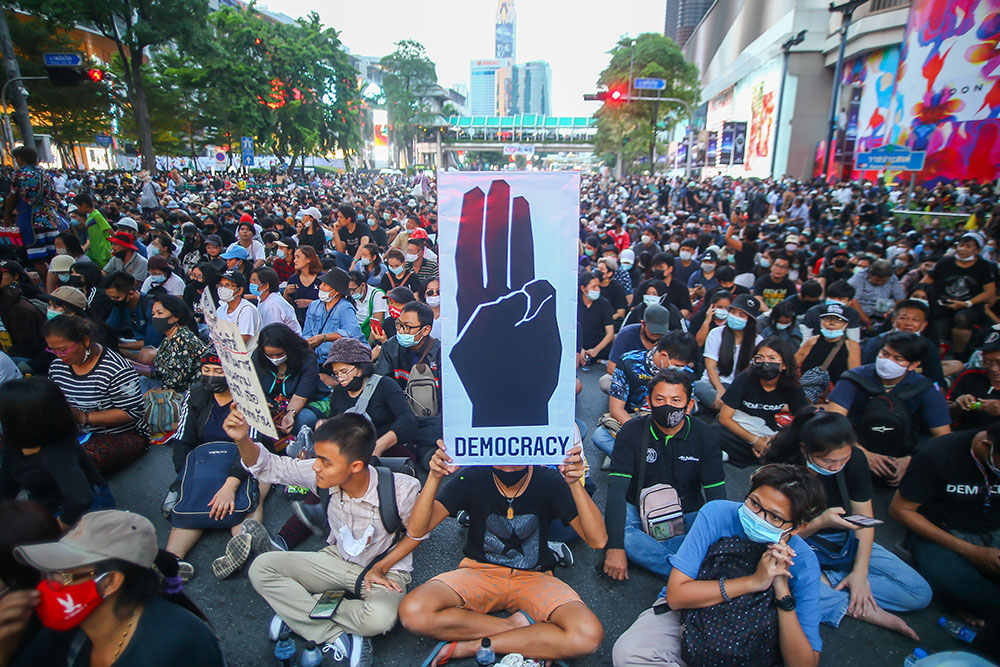
Praetorian Network Power and its Indirect Influence on Philippine Politics 19
From Colonial Enforcers to the Oligarchy’s Soldiers
Under Spanish rule, Philippine military forces wielded despotic power over society on behalf of foreign overlords. Armed service overseas served Spanish colonial, rather than domestic proto-national, concerns. The mercenary character of Philippine troops disconnected them from indigenous communities. Subalterns viewed soldiers with deep suspicion, whereas soldiers themselves remained reliant on the privileges granted by alien political elites. American rule developed, but did not fundamentally alter, this coercive structure. Philippine Scout and Constabulary units projected power through society more effectively than their Spanish-era predecessors, yet they remained an internal army geared toward domestic repression. 20
American policymakers handed off this revamped security apparatus to their Filipino charges as they indigenized the colonial state. Oligarchic elites directed army units towards external defense during the Commonwealth era (1935-1942), while retaining the Constabulary for internal security. However, social upheavals generated under Japanese occupation precipitated an embedded agrarian insurrection that necessitated a military shift towards counterinsurgency. Special operations coupled with civic action programs aimed at winning hearts and minds made the Armed Forces of the Philippines (AFP) a more visible presence in postwar Philippine society. Soldiers protected oligarchs from leftist movements and derived substantial benefits from continuing American assistance. President Ferdinand Marcos spent his first term in office (1965-1969) cultivating military support for his creeping authoritarian takeover by distributing state patronage to key units and senior commanders. Having tasted power, the AFP supported the imposition of martial law in 1972 to expand its prerogatives and influence.
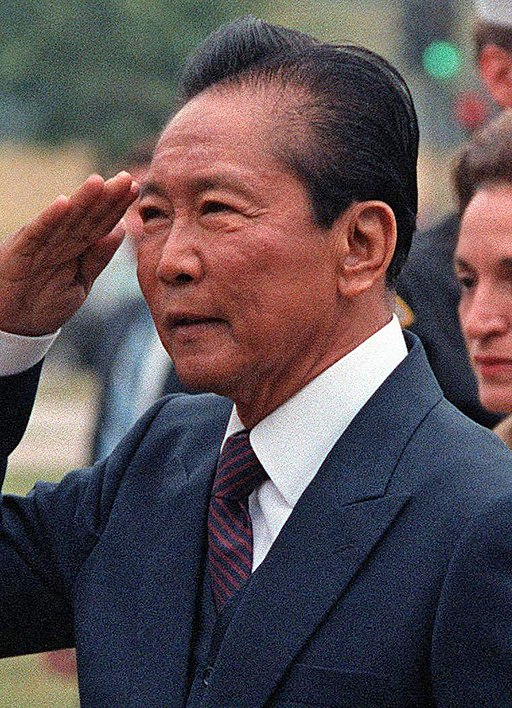
Praetorian Network Expansion
As the most autonomous element of the Marcos regime, the Philippine defense establishment derived lasting benefits from authoritarian rule. Increased budgets, weapons procurements, illicit rackets, and the formation of militias enriched and empowered the military to a point where it could no longer be controlled. The AFP maintained separate linkages with the United States, an imperial benefactor that could provide vast quantities of supranational patronage. Marcos managed to endow his kin and cronies with huge wealth while keeping most of them loyal. He could not, however, prevent senior military officials from carving out autonomous means to enrichment. Defending these means ultimately came before defending the regime.
Authoritarian rule promised extensive socioeconomic development, but only ended up exposing resource-rich provinces to a new layer of plunderers. Regime predation was particularly virulent in the Visayas and eastern Mindanao. These crony-run zones became epicenters of the Communist Party of the Philippines-New People’s Army (CPP-NPA) insurgency. Consequently, cronies allowed military units to partake in their fiefdoms’ illicit economies in exchange for praetorian protection.
Marcos’s corruption of the military ultimately expanded praetorian political networks beyond his control. While an officer’s commission brought great social prestige to men of humble origins, it seldom led to great wealth. This changed under martial law. Budgetary increases and slush funds obtained from the United States in return for sending civic action troops to Vietnam garnered the loyalty of senior officers. Personnel expanded exponentially. The AFP grew from a force of 35,000 in the late 1960s to over 113,000 in 1976. 21 Military liaison officers inserted into corporations became the main points of contact for foreign investors. They received percentages and kickbacks in exchange for facilitating contracts. Personnel expansion and provincial counterinsurgency allowed the AFP to embed its predatory practices across the archipelago. Insurgencies put a premium on military protection and corporations regularly paid off commanders to provide security. Senior officers also engaged in smuggling, extortion, and black-market weapons sales. Ending hostilities would only cut into profit margins.
As a result, counterinsurgencies became institutionalized. Giving the military a vested interest in seeing conflicts continue made them very difficult to end. Civilians in insurgent zones were subjected to strategic hamlet programs, sexual violence, torture, and extrajudicial killings. Militia units of the Civilian Home Defense Forces committed some of the worst abuses. These units worked in tandem with local commanders, providing a force multiplier and plausible deniability for atrocities brought to light by church and human rights groups. Most infractions were initially confined to fringe areas. In the mid-1970s, 85% of the military’s combat troops were based in Muslim regions. After 1980, the CPP-NPA insurgency gained traction as crony rule ran much of the Visayas and eastern Mindanao into the ground. This compelled Marcos to widen the swath of territory subject to military repression. By 1984, 50% of the AFP was deployed to Christian areas of Mindanao, including most of its special forces. 22 More and more Filipinos were exposed to AFP brutality and criminality over time.
AFP linkages with the United States predated and circumvented the Marcos regime. From 1950 to 1976, 16,000 Filipino servicemen received training in American military schools and academies. 23 This consolidated transnational connections between the two defense establishments and gave Washington valuable intelligence on Philippine military developments. American strategic priorities for the AFP shifted as the 1970s progressed. A gradual rapprochement with the People’s Republic of China altered the AFP’s remit from external defense to internal security. Vietnam-era surplus weaponry, most of it designed for counterinsurgency, was sold in increasing quantities to the Philippines. These newfound capabilities helped contain Muslim separatist aspirations, but they also raised civilian casualties. Furthermore, escalating state violence against leftist groups only increased popular support for the CPP-NPA.
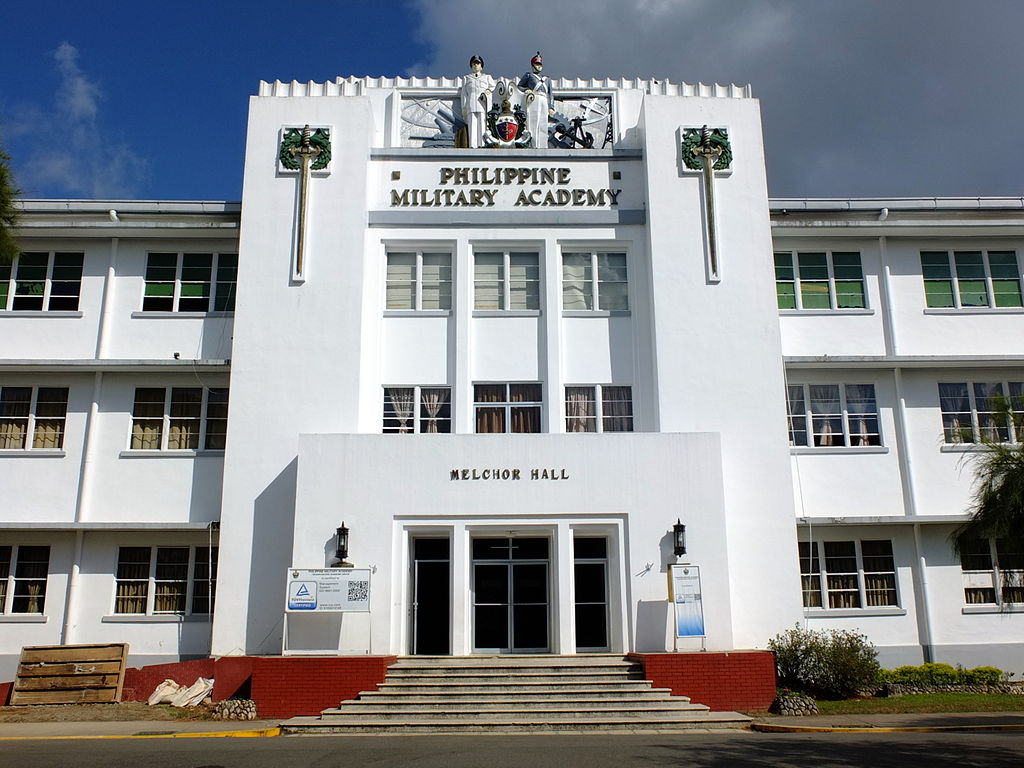
In addition to facilitating predatory enrichment, counterinsurgency campaigns created deep divisions between junior and senior ranks. Recent graduates from the prestigious Philippine Military Academy were brutalized and politicized as state violence turned inward. They faced execrable conditions in combat zones as well-connected commanders siphoned off resources to line their own pockets. Having experienced severe depravation, junior officers felt entitled to demand reform and play a larger role in Philippine society. By 1985, the Reform the Armed Forces Movement (RAM) had emerged to issue an open challenge to the Marcos regime. Made up of junior officers with combat experience in Mindanao, it had the support of defense minister Juan Ponce Enrile and Constabulary chief Fidel Ramos. The Enrile-Ramos faction took heed of growing cleavages within the military and sought to coopt rebellious elements. In linking up with a groundswell of praetorian discontent from below, they gambled on drawing enough military support for their position when they turned on Marcos after the 1986 snap election. The Pentagon had expressed avid support for RAM in congressional testimony. 24 Senior US defense officials felt Marcos was losing control of the country to the communists and a communist victory would mean losing highly strategic military bases. Only the AFP could short-circuit this slow-motion collapse, hence American planners encouraged its politicization. The Enrile-Ramos-RAM nexus might not have toppled the regime, that required massive support from social activists and religious groups, but it did fragment Marcos’s coercive phalanx. Forces still loyal to the regime were reluctant to fire on colleagues surrounded by unarmed demonstrators. Faced with burgeoning popular and praetorian opposition, Marcos had no choice but to flee.
Senior defense officials utilized authoritarian rule to construct lucrative predatory rackets and deepen linkages with the American military establishment. The AFP managed to institutionalize counterinsurgencies that provided rents, weapons, and plunder. Factional rivalries remained rife but would gradually be contained under Ramos’s leadership. Faced with deepening political unrest, the military abandoned Marcos and focused on defending its privileges.
Cacique Restoration, Indirect Praetorian Consolidation
It is unnecessary, at this late date, to provide an extensive reiteration of cacique restoration under the Aquino administration (1986-1992). 25 Corazon Aquino used the popular mandate gained from rallying People Power to declare a revolutionary government in 1986 that vested her with legislative and executive authority. This allowed her coterie to promulgate a constitution in 1987 that restored most old cacique families to power. Yet, a widespread communist insurgency meant that the privileges of a politicized military would have to be confirmed and extended. The rapid dissipation of cacique legitimacy among social activists compelled the national oligarchy to dispense ever greater quantities of patronage and protection to military commanders who kept reformist movements in line. This further consolidated praetorian network power.

The Aquino years saw an increasingly coherent praetorian bloc drive itself into the heart of Philippine national politics. Military factionalism was reduced as Fidel Ramos sidelined rivals and consolidated AFP influence over civilian officials. Ramos began his association with the Aquino government as AFP Chief of Staff. After a short period as Aquino’s defense chief Enrile was replaced by General Rafael Ileto, a seasoned soldier marginalized during the Marcos era because of his opposition to the declaration of martial law. Ileto quickly dismantled Enrile’s network in the defense establishment by purging the latter’s clients. 26 As this occurred, Ramos consolidated his hold over Aquino, using the threat of RAM-directed coups as leverage. By early 1988, Ramos had assumed the defense portfolio and gradually brought RAM to heel. Most officers jailed for their role in the attempted December 1989 coup came under his protection and were later granted amnesty.
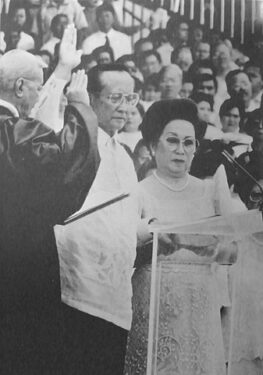
Upon winning the 1992 presidential elections, Ramos established the National Unification Commission (NUC) to facilitate a negotiated settlement with all rebel forces in the country. Although the NUC had some success in curtailing Muslim and NPA insurgents, it appears to have been primarily directed at incorporating RAM rebels into government. Negotiations made mutinous soldiers into legitimate political players. Gregorio Honasan, RAM’s principal leader, used this opportunity to relaunch his career and win a senatorial seat in 1995. With one of their own in Malacanang, military coups became redundant. Ramos reined in extraconstitutional praetorian violence in exchange for consolidating the AFP’s institutional privileges.
Failure to fully end provincial insurgencies after Marcos gave AFP senior officers continuing access to conflict rents. Beyond justifying defense budgets, unrest kept protection prices high. Corporations continued to pay commanders for security while rank-and-file soldiers extorted money from urban and rural inhabitants across insurgent zones. 27 Democratization also witnessed the increasing use of militias. Marcos had expanded militia organizations as a counterforce to the military’s growing power. Yet, almost immediately, militia formations fell under the influence of local AFP commanders. AFP-militia linkages deepened further after 1986. The military armed and encouraged anti-communist vigilante groups such as Alsa Masa (masses arise) and Tadtad (chop-chop) to combat the NPA. Several groups were inspired by various forms of quasi-Christian fanaticism that viewed leftists as godless heathens. They subjected suspected dissidents to sexual violence, murder, and mutilation, often displaying dismembered corpses as a warning to potentially disloyal communities.
AFP commanders transferred vigilantes into more regimented paramilitary formations as needed. Although given more advanced weaponry and training, they lost none of their brutality. In addition to standard usages, such as giving the AFP plausible deniability for human rights violations, militia expansion gave the military added muscle to let loose on tribal minorities, small farmers, and peasant squatters. The need for military and militia coercion increased as Philippine logging and mining industries boomed at the turn of the twenty-first century. These low-intensity counterinsurgencies, interspersed with periodic accelerations, impeded genuine sociopolitical reform and confirmed praetorian power.
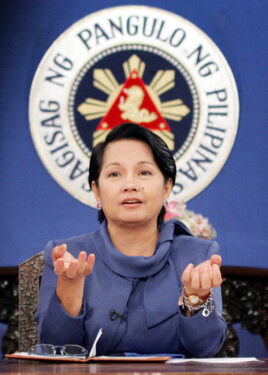
All this reached a high point during Gloria Macapagal Arroyo’s presidency (2001-2010). As Joseph Estrada’s Vice-President, Arroyo came to power after the former’s downfall during a second People Power revolution in 2001. Lacking electoral legitimacy, she had to construct a political coalition with powerful predatory groups inside and outside civilian government. 28 A strategic alliance with the United States aimed at combating Islamic extremists provided aid and training that kept the AFP happy. Arroyo skillfully deployed the patronage available to incumbent Philippine Presidents to clinch alliances with senior military officers and provincial warlords. This won her reelection in 2004, but only with staggering violence and fraud. Few were fooled by the subterfuge. Several impeachment attempts followed and were defused with further corruption. Junior officers in the AFP frequently rumbled at presidential plunder and delayed promotions, going so far as to attempt a coup in 2006. The coup was aborted when senior officers refused to join and exposed the conspirators. Continual government dysfunction led to resurgent leftist activism in the countryside. These political headwinds made Arroyo even more committed to her military and warlord allies. 2006 saw an acceleration of counterinsurgency operations by the AFP and its paramilitary associates.
In Nathan Gilbert Quimpo’s view, the Arroyo administration was a predatory regime that corroded state institutions into mechanisms solely geared toward extracting wealth from society. 29 Since the turn of the twenty-first century, Philippine institutions have mutated into criminal enterprises that cannot be reformed, only replaced by more democratic ones. Quimpo’s point is well taken, but the degree to which the state’s coercive institutions have achieved autonomous means of predation and the ability to impose conditions on chief executives merits further consideration. Presidents neglect praetorian network interests at their peril.
In more recent years, the military has tried to recast itself into an external defense force. The AFP disgorged itself of the Philippine Constabulary, now called the Philippine National Police, in 1991. Riddled with corruption and responsible for numerous abuses, the Constabulary could be discarded and left to handle domestic order issues while the AFP focused on defending national frontiers. Fidel Ramos was the main architect of this initiative. Ramos came from the core of the armed forces’ counterinsurgency establishment. He knew who the rotten apples were, how to marginalize or redistribute them, and could reduce bloated budgets without facing criticism from AFP ranks. Government posts, rather than conflict rents, appear to have been the primary mode of praetorian accumulation during the Ramos era. Yet, this trend was reversed during Estrada’s and Arroyo’s administrations as the AFP was deployed to crush internal dissent.
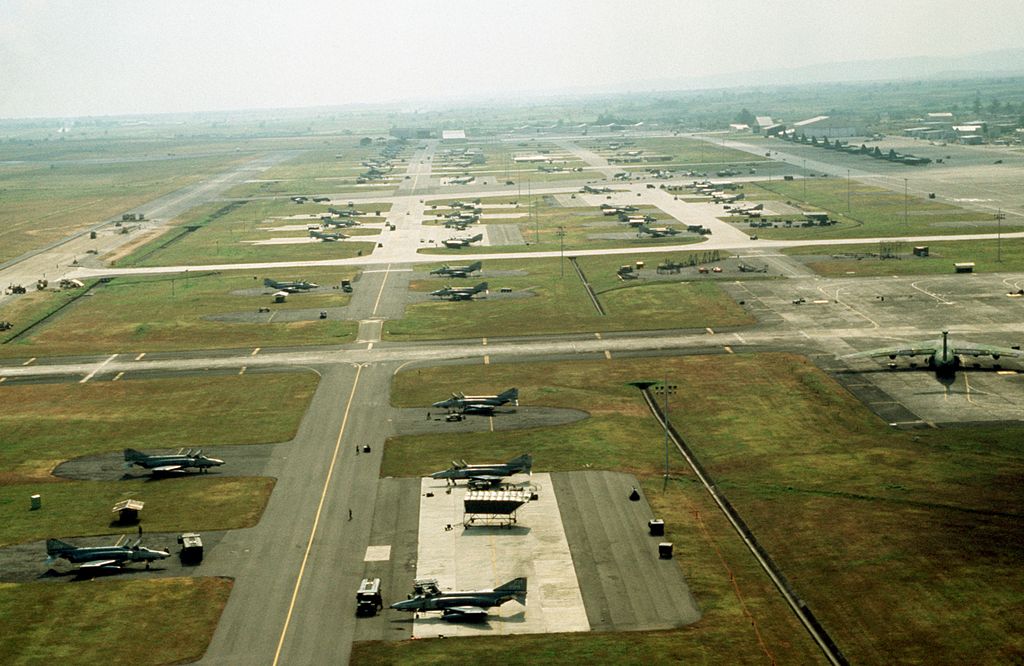
Nevertheless, Arroyo’s reestablishment of close relations with the United States after 9-11 allowed the AFP to reconsolidate linkages with its traditional supranational patron. Closure of US military facilities in 1992 removed fixed territorial infringements on Philippine sovereignty. The bases had drawn sharp criticism from nationalist groups who claimed that the Philippines languished under neocolonial American oppression, a charge not easily refuted by conservative elites. Rather than using the War on Terror as a pretext to reconstruct military bases in the Philippines, American policymakers emphasized close human relationships with senior AFP officers. Joint training exercises and arrangements allowing for the rapid deployment of American military forces onto Philippine soil in the event of external, namely Chinese, aggression provided the AFP with patronage outside Malacanang’s direct control. Counterinsurgency operations throughout the Sulu archipelago were depicted as defensive measures against foreign jihadists radicalized in island Southeast Asia or the greater Middle East. In addition, AFP commanders continued to profit from illicit economic activities conducted across highly porous maritime zones. The praetorian network was well entrenched by the time Duterte came to power.
Praetorian Constraints on Warlord Rule
Rodrigo Duterte’s iconoclasm stemmed less from his foul-mouthed tirades and devotion to extrajudicial violence than his political origins. Coming from a peripheral elite family based in southeastern Mindanao, Duterte spent the 1980s and 90s deepening his hold on Davao City. As mayor, he successfully marginalized and coopted NPA violence while encouraging multinational investment. Japanese and Chinese corporations repatriated substantial profits as Duterte minimized NPA extortion. Having imbibed radical revolutionary ideology, and reaping rewards from Chinese investors, the mayor harbored a deep dislike for the United States. He attempted to expand on these connections by sidelining American strategic interests in the Philippines after assuming the presidency. Yet, on catapulting from Davao City to Malacanang, Duterte entered a more crowded political landscape than Marcos initially had to deal with. In addition to restored caciques, he encountered a praetorian network that had spent thirty years entrenching its power.

At first, Manila’s structures of illicit accumulation demonstrated their plasticity by accommodating the Duterte clique’s entry into national patronage networks. Presidential control over pork barrel projects and budgetary transfers guaranteed outward obedience among most Manila politicos. Unlike Marcos or Ramos, however, Duterte had not spent prolonged periods hovering around the center of power. He lacked a solid Manila client base that previous parvenu oligarchs mobilized to consolidate control. As Duterte began to threaten established patrimonial and political relationships he faced significant praetorian pushback. AFP senior officers did not comply with Duterte’s attempted tilt toward China as this would jeopardize training, weaponry, and security guarantees provided by the United States. Furthermore, the AFP felt Chinese military base construction throughout the South China Sea impinged on Philippine territorial sovereignty. Given their purported focus on external defense, the generals simply could not oblige. Senior military commanders appear to be ignoring Duterte, even going so far as calling in American special operations forces during 2017’s Marawi City siege without the president’s prior knowledge. In addition, the AFP refused to take part in the Drug War, at least as it was being waged in major metropolitan areas, for fear that individual units would be corrupted by engaging in extortion or mutating into de facto drug gangs beyond their superiors’ control. Moreover, Duterte’s initial efforts to broker a peace with the CPP-NPA collapsed and further increased his reliance on the AFP. The Duterte challenge shook the Philippine political scene, but it also demonstrated the resilience of incumbent power structures.
Duterte’s rise proved that a warlord with a compact support base can win the presidency when he forms opportunistic alliances with Manila elites and deploys demagogic rhetoric. This combination allowed a local warlord to become a national oligarch. Upon entering office, however, the limits of parvenu oligarchic power became readily apparent. Praetorian network interests placed severe constraints on national warlord rule. Combat operations against the NPA continued and the US alliance has remained intact. Rents associated with these realities still flow into praetorian hands. Like Arroyo, Duterte had to construct an oligarchic-praetorian coalition committed to established interests to remain in power. Ferdinand Marcos Jr.’s assumption of power in 2022 signaled an executive shift to a more pro-US orientation. At present, the president and his praetorians are essentially of one mind.
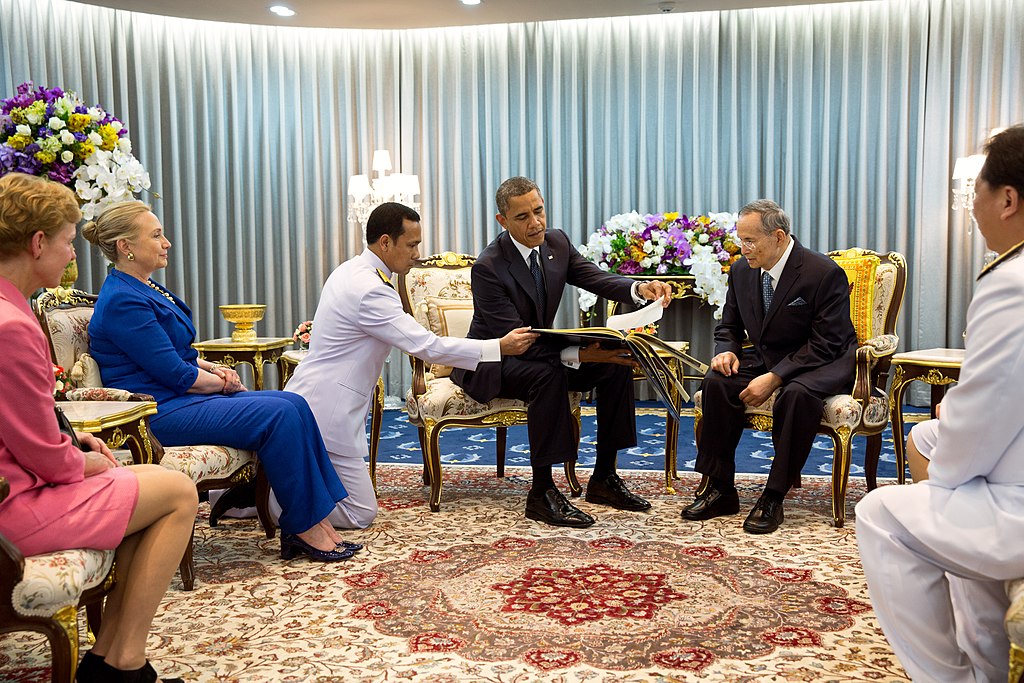
Conclusions
US security assistance to Thailand and the Philippines has resulted in divergent praetorian outcomes. These outcomes have not always unfolded according to American intentions. Attempts at direct praetorian control over state power in Thailand generated extensive social discontent that led to a decline in military power. Thai generals bent the entire political apparatus toward rent seeking activities that made them extremely rich, but they could not institutionalize their popular legitimacy after Sarit’s death. Their corruption and overcommitment to America’s wars for containment in Indochina turned extra-bureaucratic elements in society against them. Praetorian rule was too blatant, and its shortcomings were starkly apparent. This left the military vulnerable to capture by other conservative elites empowered via US counterinsurgency programs. Palace officials, led by a charismatic king, used American assistance to build a mass following and incorporate the military into the monarchy. This system functioned sufficiently well to stave off societal challenges to royalist supremacy while Bhumipol was alive. After he died, monarchic charisma declined, and an intertwined monarchic-praetorian oligarchy is presently grappling with progressive mass movements calling for a monarchy truly above and beyond politics.
The Philippine military is far less ambitious. It exercises influence indirectly over a narrower range of interests. After facing down threats of direct praetorianism during Corazon Aquino’s administration, senior commanders saluted their presidents and openly committed themselves to civilian political supremacy. Nevertheless, the Philippine military has an institutional interest in prosecuting counterinsurgency campaigns against communist rebels and maintaining a security alliance with the United States. Dismantling indirect praetorian influence is far more difficult than toppling inept generals desperately clinging to power. Philippine praetorian interests maintain a firmer hold on their privileges by limiting their objectives.
Mesrob Vartavarian
Harvard University
Notes:
- W. Scott Thompson, Unequal Partners: Philippine and Thai Relations with the United States, 1965-75. Lexington: Lexington Books, 1975; Bruce Cumings, Dominion from Sea to Sea: Pacific Ascendancy and American Power. New Haven: Yale University Press, 2009, chap. 15. ↩
- Robert M. Blackburn, Mercenaries and Lyndon Johnson’s “More Flags”: The Hiring of Korean, Filipino, and Thai Soldiers in the Vietnam War. Jefferson: McFarland, 1994. ↩
- By ‘praetorian’, I mean soldiers involved in politics. ↩
- The classic statement on the localization of exogenous influences by Southeast Asian elites remains, O.W. Wolters, History, Culture, and Region in Southeast Asian Perspectives. Ithaca: Cornell Southeast Asian Program Publications, 1999, 55-57, 173-174, 182-188. ↩
- David K. Wyatt, “Siam and Laos, 1767–1827.” Journal of Southeast Asian History 4, no. 2 (1963): 19-47. ↩
- Victor Liberman, Strange Parallels: Southeast Asia in Global Context, c. 800-1830. Volume 1: Integration on the Mainland. Cambridge: Cambridge University Press, 2003, 302-313, 329-335. ↩
- Federico Ferrara, The Political Development of Modern Thailand. Cambridge: Cambridge University Press, 2015, 39-65. ↩
- Benjamin A. Batson, The End of Absolute Monarchy in Siam. Singapore: Oxford University Press, 1984, chaps. 1-3. ↩
- Kobkua Suwannathat-Pian, Kings, Country and Constitutions: Thailand’s Political Development, 1932-2000. London: RoutledgeCurzon, 2003, 33-41. ↩
- Kobkua Suwannathat-Pian, Thailand’s Durable Premier: Phibun through Three Decades, 1932-1957. Kuala Lumpur: Oxford University Press, 167-192, 262-271. ↩
- Daniel Fineman, A Special Relationship: The United States and Military Government in Thailand, 1947-1958. Honolulu: University of Hawai’i Press, 1997, 114-125. ↩
- Thak Chaloemtiarana, Thailand: The Politics of Despotic Paternalism. Ithaca: Cornell Southeast Asia Program Publications, 2007, chap. 2. ↩
- Thak, Thailand, chaps. 4-5. ↩
- Paul M. Handley, The King Never Smiles: A Biography of Thailand’s Bhumipol Adulyadej. New Haven: Yale University Press, 2006. ↩
- Richard A. Ruth, In Buddha’s Company: Thai Soldiers in the Vietnam War. Honolulu: University of Hawai’i Press, 2011, 1. ↩
- Kathrine A. Bowie, Rituals of National Loyalty: An Anthropology of the State and the Village Scout Movement in Thailand. New York: Columbia University Press, 1997, 21-33; Thongchai Winichakul, Moments of Silence: The Unforgetting of the October 6, 1976, Massacre in Bangkok. Honolulu: University of Hawai’i Press, 2020, 1-6. ↩
- Handley, The King Never Smiles, chap. 15. ↩
- Thongchai Winichakul, Thailand’s Hyper-Royalism: Its Past Success and Present Predicament. Singapore: ISEAS-Yusof Ishak Institute, 2016. ↩
- This section is a slightly amended version of Mesrob Vartavarian, “Praetorian Network Politics in the Philippines.” International Institute for Asian Studies Newsletter 84 (2019): 14-15. ↩
- Carolina Galicia Hernandez, “The Extent of Civilian Control of the Military in the Philippines: 1946-1976.” PhD diss., State University of New York at Buffalo, 1979, 95-120. ↩
- David Wurfel, Filipino Politics: Development and Decay. Ithaca: Cornell University Press, 1988, 140-152. ↩
- Richard J. Kessler, Rebellion and Repression in the Philippines. New Haven: Yale University Press, 1989, 144. ↩
- Wurfel, Filipino Politics, 145. ↩
- Kessler, Rebellion and Repression, 130. ↩
- Alfred W. McCoy, ed., An Anarchy of Families: State and Family in the Philippines. Madison: University of Wisconsin Press, 2009. ↩
- Alfred W. McCoy, Closer than Brothers: Manhood at the Philippine Military Academy. New Haven: Yale University Press, 1999, 274, 283, 303-304. ↩
- Peter M. Sales, “State Terror in the Philippines: the Alston Report, Human Rights and Counter-Insurgency Under the Arroyo Administration.” Contemporary Politics 15, no. 3 (2009): 321-336 ↩
- Paul D. Hutchcroft, “The Arroyo Imbroglio in the Philippines.” Journal of Democracy 19, no. 1 (2008): 141-155. ↩
- Nathan Gilbert Quimpo, “The Philippines: Predatory Regime, Growing Authoritarian Features.” The Pacific Review 22, no. 3 (2009): 335-353. ↩
